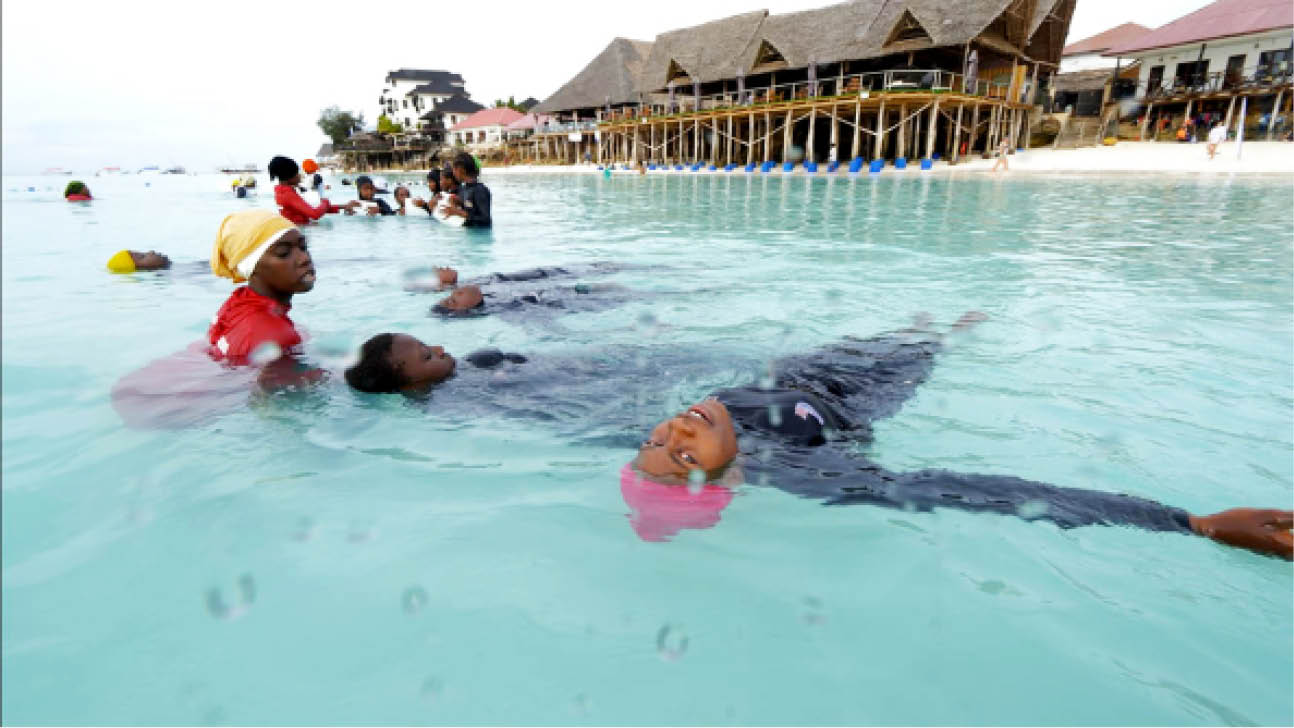Inside ‘Burkini island’ where Muslim girls learn to swim
On the east coast of Africa lies the Zanzibar archipelago, where the locals greet you warmly with “Hakuna Matata,” the Swahili word for “no worries.” It’s a semi-autonomous region of Tanzania that attracts spice lovers, beachgoers and snorkelers drawn to its white beaches and warm climate. It also happens to be the birthplace of Queen’s […]

Girls swimming in Zanzibar island
On the east coast of Africa lies the Zanzibar archipelago, where the locals greet you warmly with “Hakuna Matata,” the Swahili word for “no worries.”
It’s a semi-autonomous region of Tanzania that attracts spice lovers, beachgoers and snorkelers drawn to its white beaches and warm climate.
It also happens to be the birthplace of Queen’s Freddie Mercury.
Here, life’s truly a beach, and everything revolves around the Indian Ocean that surrounds it — from fishing to seaweed farming, tourism, and even exercise.
And yet, a large portion of the population can’t swim. In 2011, Zanzibar was struck by tragedy. A spice islander boat sunk and most of the locals on board drowned.
According to the WHO, 372,000 people across the world die from drowning each year, and women and children are most at risk.
But a community initiative has set out to prevent this by offering everyone, of all ages, swimming and water safety lessons.
Named “The Panje Project,” after a local fish, the organization which began in 2011, launched the swim program in 2013 with just 20 students on the northern tip of the island.
The project was started by members of the community of Nungwi village with the help of Khadija Sharriff who was deeply affected by the 2011 boating accident and felt compelled to do something to prevent a similar tragedy from happening again.
Five years later, the tiny civic project runs programs across Zanzibar and has taught 7000 people to swim.
When she started the Panje Project with other community members, Sharriff faced obstacles in persuading families to send their children, and in particular their female children to learn how to swim.
Zanzibar is a predominantly Muslim society, and engaging women and girls remains the organization’s major obstacle, says Sharriff.
“When we first started, the elders… in the village… just couldn’t put their finger around this concept of taking their daughters to the beach and teaching them how to swim, and they just felt like — no, absolutely not, we can’t give them that kind of freedom,” she recalls.
It was not until a prominent elder in the village enrolled his daughter to the swimming program that others started to do the same.
First, Sharriff and her team designed a burkini for the female students.
The full-length swimsuits meant that the girls didn’t feel self-conscious or uncomfortable, she says.
They also approached women from the community with the opportunity to train as swimming teachers.
Kazija Haji, who goes by “K,” was one of the project’s first female swimming teachers — not exactly the obvious career choice for a traditional Muslim woman, she admits.
Formerly a school teacher, Kazija, 28, learned to swim just three years ago – through the Panje Project. While she admits to initially being scared of the water, she was a natural and soon trained to become a teacher.
Today, she is one of 24 female swimming instructors, teaching all ages and genders – starting from three years old all the way through to adulthood.
Despite it being an unusual career choice for a Zanzibari woman, K has wholly embraced it as her calling – “ I feel such a great sense of accomplishment teaching swimming because I do it for myself, my family and my community.”
K is more than just a teacher; she is a role model to aspiring swimmers and teachers.
In 2018 alone 633 females who learned to swim through the Panje project – joining the ranks of a new generation of Zanzibari people who no longer need to live in fear of the water that surrounds them.
Source: CNN
